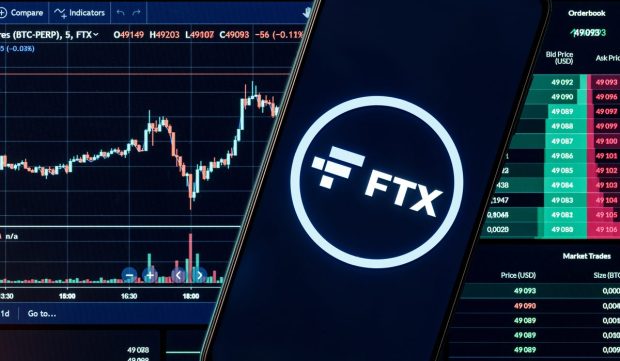FTX’s Bankman-Fried Minted Massive Crypto Fortune by Taking (Relatively) Long View

Sam Bankman-Fried became one of the richest names in crypto by building a better mousetrap: a stable and customer-focused exchange that grew primarily by word of mouth. Just how rich is a matter of some dispute.
Forbes estimates that the fortune of the founder and CEO of the cryptocurrency exchange FTX is $20 billion, up from $8.7 billion in 2021.
Bloomberg’s Billionaires Index, updated daily, puts his current net worth at $8.7 billion, down $7.5 billion this year.
That’s a big disparity. Fortune stumps for the lower number, saying on May 12 — a week after the market-wide panic run on the Terra/LUNA algorithmic stablecoin ecosystem that saw bitcoin fall 30% in a week — that “Bankman-Fried has lost half his net worth in 2022,” which it put at $11.3 billion.
Either way, that isn’t too bad, considering that the main source of his wealth, the FTX cryptocurrency exchange, was founded just three years ago and FTX US just last year.
Nor has ascension to the Forbes 400 cramped his style very much. Known for his unruly mop of hair and tendency to wear shorts, Bankman-Fried has said publicly that he’d only wear a suit and tie to testify before Congress, following through on Dec. 9 at the House Financial Services Committee hearing on digital assets and again on Feb. 7 before the U.S. Senate Committee on Agriculture on the role of the Commodity Futures Tradition Commission (CFTC) in supervising cryptocurrencies.
See more: Scenes From the Five-Hour Congressional Hearing on Crypto
Related reading: Senate Hearing on Digital Assets May Test Role of CFTC and DeFi
But he’s also suggested that the look is calculated, in much the same way that Meta CEO Mark Zuckerberg was long known for his hoodies.
He’s also become a huge political donor, giving $5 million to President Joe Biden in the 2020 election cycle and $23 million to other politicians and PACs this year. He’s pledged to spend “at least” $100 million in the 2024 presidential election race, and possibly as much as $1 billion. Those amounts are outside of his crypto lobbying spending, but are so high that it’s raised complaints that he’s singlehandedly impacting the crypto regulation debate. Aside from making himself into a U.S. political donor, he’s spent a great deal of time lobbying in person — far more than most CEOs.
Just how much financial pain Bankman-Fried in right now depends, for the most part, on how you value FTX and its U.S. counterpart, FTX US, as well as Alameda Research, the cryptocurrency quantitative trading firm and liquidity provider that was the source of the 30-year-old’s initial wealth.
FTX was last valued at $32 billion, based on a $400 million venture round in January. FTX US was valued at $8 billion at the time, Insider reported in late February — far more than Nasdaq.
Where’s It Coming From?
One part of this is that FTX is a top exchange. FTX was the No. 13 spot exchange by volume on Thursday (July 7), according to CoinMarketCap, but it had the No. 2 exchange rating score, which looks at volume, but also web traffic, liquidity and most importantly, confidence that its volumes are accurate. It was the No. 3 derivatives market.
Publicly traded Coinbase’s trading volume dropped 44% between Q4 2021 and Q1 2022, but it does not trade derivative products like futures and options. FTX’s 24-hour derivatives volumes are two to three times its spot trading volumes — $3.9 billion versus $1.4 billion on Thursday. FTX US doesn’t offer derivatives and had a 24-hour volume of $1.4 billion.
Another factor is that FTX very new. It was founded in 2019 after the boom hit and has been growing far, far more quickly than any other reputable exchange.
By the numbers, FTX has raised $1.7 billion in seven venture capital rounds from 47 investors. FTX US raised $400 million in one round this year. In comparison, Coinbase raised $550 million in 17 rounds dating to 2012 before going public.
Simply put, Bankman-Fried’s ownership of FTX and FTX US is a lot less diluted. When the two were valued at $40 billion in February — FTX at $32 billion and FTX US at $8 billion — Bankman-Fried’s wealth was about $25 billion, Forbes said, a number he called accurate.
All of those numbers depend on the trade volumes on his exchanges. They make money in several ways, far and away the biggest being trading fees on every transaction. Then there are lines of credit extended to larger traders. Beyond that, they collect interchange fees on the FTX crypto debit card, which allows holders to spend the cryptocurrency anywhere Visa is accepted. There’s also an NFT marketplace and investments in other companies.
Those have dropped substantially. The Block put crypto trading volume at a high of $2.23 trillion in May 2021, at the height of the year’s first bull market, dipping to $670 billion that July and rising to $1.4 trillion in November’s second bull market. In June, it was $6.2 billion.
There’s one more factor to consider. In large part, FTX’s early growth — even into 2021 — was based on word-of-mouth because Bankman-Fried built a better mouse trap: The Burmuda-based exchange very rarely crashes under high volume, which was a big problem for a number of exchanges and was a huge one for Coinbase in FTX’s first few years. FTX also focused on customer service — this, and the crashes, were part of the frustration that Bankman-Fried said led him to start FTX in the first place.
While this was a big deal in attracting retail buyers, it has given it a strong base in institutional clients, which are responsible of 80% of its revenue and volume. While these “whales” tend to pay lower fees, they also trade a lot more.
Sign up here for daily updates on all of PYMNTS’ Crypto coverage.
